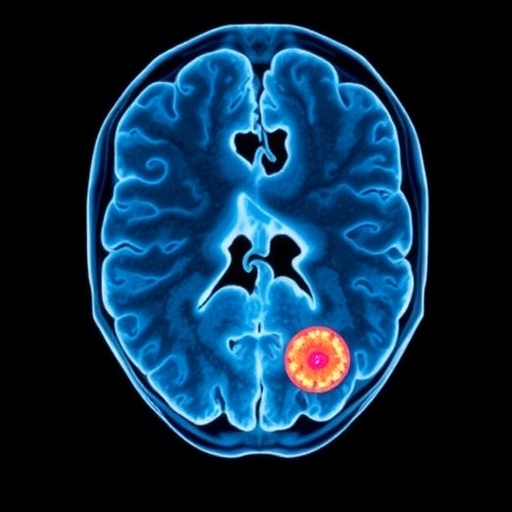In a groundbreaking advancement for quantum metrology, researchers have successfully demonstrated spin squeezing within a solid-state system—an achievement that promises to revolutionize precision measurement technologies. Spin-squeezed states, long recognized for their utility in surpassing classical measurement limits, have now been realized in an ensemble of nitrogen–vacancy (NV) centers in diamond at room temperature. This marks a pivotal moment: the first reported instance of entanglement-enhanced sensing harnessed in a solid-state environment, offering a pathway to unprecedented sensor performance in practical, scalable quantum devices.
Spin squeezing fundamentally relies on engineering quantum correlations among spins to reduce uncertainties in particular measurement directions, thereby beating the standard quantum limit imposed by independent spins. Historically, such squeezing has been achieved predominantly in atomic and ionized systems—ultracold atoms trapped in optical cavities or ions in crystal arrays. These platforms excel in controllability but present scalability and operational complexity challenges. The new work transcends these hurdles by leveraging the intrinsic dipolar magnetic interactions naturally present in NV center ensembles, revealing that native interactions can be harnessed rather than suppressed for quantum advantage.
The nitrogen–vacancy center in diamond is a point defect comprised of a substitutional nitrogen atom adjacent to a vacancy in the carbon lattice. Renowned for its optical addressability and long coherence times even at room temperature, the NV center constitutes a prime candidate for solid-state quantum technologies. Yet, inducing and detecting entanglement such as spin squeezing in these imperfectly ordered arrays, where defect positioning is random, has posed a formidable challenge. The irregular spatial distribution complicates the control of spin dynamics and often obscures collective quantum features.
Overcoming this obstacle, the research team devised a novel interaction-enabled noise spectroscopy method. This technique provides a way to characterize the quantum projection noise—the fundamental spin uncertainty—without requiring direct, high-resolution readout of the spin state’s probability distribution. By analyzing noise spectra mediated by dipole–dipole interactions among NV spins, they could infer squeezing signatures with remarkable precision. This indirect approach circumvents the technical limitations commonly encountered in solid-state spin detection.
Key to their success was the strategic isolation of a relatively ordered sub-ensemble of NV centers within the broader disordered matrix. Recognizing that randomness in spin positions limits squeezing generation, the researchers implemented advanced filtering protocols and spatial selection techniques to focus control on clusters where dipole interactions behave more coherently. This careful engineering of the spin environment enabled clearer observation of nonclassical correlations and enhanced the collective spin dynamics vital for squeezing.
The experimentally observed spin squeezing reached a depth of approximately −0.50 ± 0.13 decibels below the noise floor of uncorrelated spins. While modest compared to some atomic system benchmarks, this represents a transformative milestone for solid-state quantum sensing. The spin-squeezed states produced in the diamond sample directly utilize native dipolar coupling, showing that quantum entanglement can be generated and maintained within these robust, scalable platforms even at ambient conditions—long a holy grail for quantum technologies.
This demonstration holds profound implications for a range of quantum sensor applications. NV centers feature prominently in magnetometry, electrometry, thermometry, and timekeeping; introducing entanglement-enhanced measurement protocols could dramatically reduce noise floors and boost sensitivity beyond classical limits. More broadly, this work offers a blueprint for harnessing intrinsic solid-state interactions to produce entangled resource states previously achievable only in exquisitely engineered atomic systems.
Moreover, the research emphasizes the scalability of solid-state ensembles, which can incorporate millions of spins, potentially unlocking new domains of quantum-enhanced sensing across diverse fields. From biomedical imaging to navigation and fundamental physics experiments, spin squeezing in solids could enable sensors that are both highly sensitive and readily deployable outside laboratory settings. The combination of room-temperature operation and optical accessibility further strengthens this practical appeal.
The findings also foster exciting fundamental insights into the dynamics of strongly interacting spin systems. The interplay of dipolar interactions, disorder, and decoherence in NV ensembles underpins rich many-body physics phenomena. By demonstrating controlled entanglement amidst these complexities, the study opens avenues for exploring driven quantum matter, information processing, and quantum error correction in spatially extended solid-state platforms.
Looking forward, the authors highlight opportunities to improve squeezing depth by optimizing defect densities, crystal purity, and readout schemes. Integration with advanced control sequences and quantum feedback may further enhance performance and robustness. Coupling NV ensembles to photonic and mechanical elements also suggests routes toward hybrid quantum technologies with entanglement-mediated communication and sensing capabilities.
This breakthrough bridges a longstanding gap between the exceptional metrological advantages of spin squeezing and the practical benefits of solid-state quantum systems. It confirms that the noisy, disordered environment of diamond spin ensembles can be tamed to realize precisely engineered quantum correlations. Ultimately, this work paves the way for next-generation quantum sensors that combine entanglement-enhanced sensitivity with the ruggedness and scalability demanded for real-world deployment.
By capturing spin squeezing signatures in a room-temperature solid, the study not only advances quantum metrology but also enriches the broader quantum information science landscape. It signals a promising future where entanglement and coherence become standard tools in nanoscale sensing and quantum technologies built upon the remarkable physics of defects in solids.
Subject of Research:
Spin squeezing and quantum entanglement in solid-state ensembles of nitrogen–vacancy centers in diamond.
Article Title:
Spin squeezing in an ensemble of nitrogen–vacancy centres in diamond.
Article References:
Wu, W., Davis, E.J., Hughes, L.B. et al. Spin squeezing in an ensemble of nitrogen–vacancy centres in diamond. Nature 646, 74–80 (2025). https://doi.org/10.1038/s41586-025-09524-8
Image Credits: AI Generated
DOI:
https://doi.org/10.1038/s41586-025-09524-8
Tags: advancements in quantum opticsentanglement-enhanced sensingintrinsic dipolar magnetic interactionsnitrogen-vacancy centers in diamondovercoming operational complexity in quantum systemsprecision measurement technologiesquantum correlations among spinsroom temperature quantum devicesscalable quantum technologiessolid-state quantum systemsspin squeezing in quantum metrologysurpassing classical measurement limits





